
CPI Fizzles while the Northeast sizzles
By John Thorpe, Senior Broker

|
|||||||||||||||||||||||||||||||||||||||||||||||||||||||||||||
|
|||||||||||||||||||||||||||||||||||||||||||||||||||||||||||||
|
As a high risk trading type, futures trading is not for someone who is faint-hearted. Though there are a number of different ways of investing in futures , it is important to stick to what you know. Treading into unknown waters is not something that you should do when dealing in futures.
From managing margins to ordering trades to doing market analysis and more if you want to, you can do that all by yourself – but you may betaking double the risk. Therefore, when trading in futures, it may be better to seek advice from a professional trader.
Professional trading experts at Cannon Trading can help you with your futures trading. We are also there to keep you updated with the latest on futures trading and market news. All the news and latest articles on futures trading are published on our site under the category Archive Futures Trading News, which you are currently browsing through. Read more and the latest here and keep updated.


|
|||||||||||||||||||||||||||||||||||||||||||||||||||||||||||||
|
|||||||||||||||||||||||||||||||||||||||||||||||||||||||||||||
|

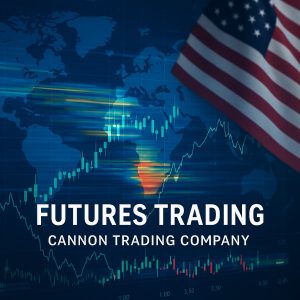
|
|||||||||||||||||||||||||||||||||||||||||||||||||||||||||||||||||||||||||||||||||
|
|||||||||||||||||||||||||||||||||||||||||||||||||||||||||||||||||||||||||||||||||
|
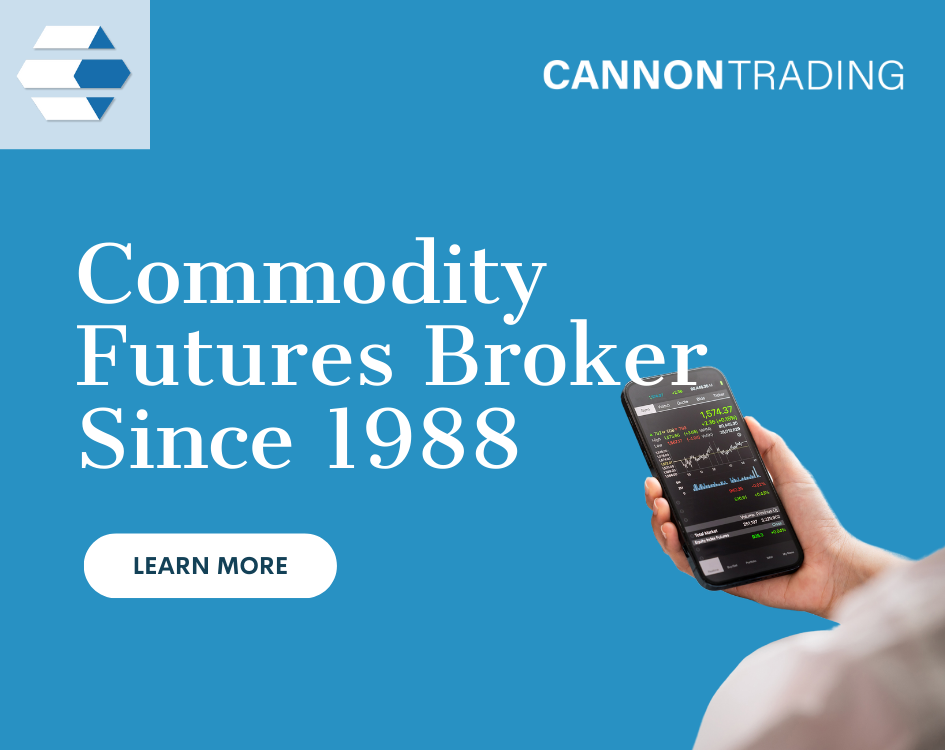
|
||||||||||||||||||||||||||||||||||||||||||||||||||||||||||||||||||||||||||||||||||||||||||||||||||||||||||||||
|
||||||||||||||||||||||||||||||||||||||||||||||||||||||||||||||||||||||||||||||||||||||||||||||||||||||||||||||
|


|
||||||||||||||||||||||||||||||||||||||||||||||||||||||||||||||||
|
||||||||||||||||||||||||||||||||||||||||||||||||||||||||||||||||
|

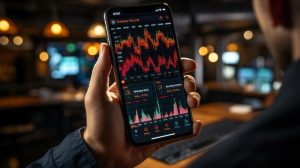
|
||||||||||||||||||||||||||||||||||||||||||||||||||||||||||
|
||||||||||||||||||||||||||||||||||||||||||||||||||||||||||
|

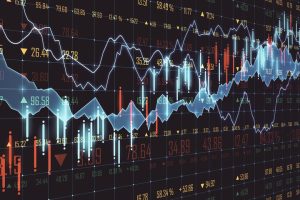
|
||||||||||||||||||||||||||||||||||||||||||||||||||||||||||||||||||||
|
||||||||||||||||||||||||||||||||||||||||||||||||||||||||||||||||||||
|

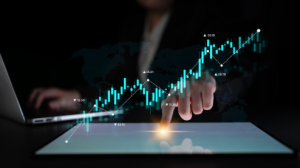
|
|||||||||||||||||||||||||||||||||||||||||||||||||||||||||||||||||||||||||||||||
|
|||||||||||||||||||||||||||||||||||||||||||||||||||||||||||||||||||||||||||||||
|
In the fast-evolving world of futures trading, having an edge can make the difference between profit and loss. Traders are constantly seeking tools that offer enhanced visibility, faster decision-making, and deeper insights into market behavior. Enter BookMap, one of the most innovative and powerful platforms for futures trading. Known for its real-time, visually rich market data analysis, BookMap trading enables traders to see the market with unmatched depth.
But even the best technology must be paired with exceptional support and brokerage infrastructure to truly thrive. That’s where Cannon Trading Company, one of the best futures brokers, steps in. With decades of experience, 5-star TrustPilot reviews, regulatory excellence, and a wide selection of elite trading platforms, Cannon Trading empowers traders to leverage BookMap to its fullest potential.
This article dives deep into how BookMap enhances trading through its signal generation and analytics features and how Cannon Trading Company helps traders harness this potential.
Chapter 1: What is BookMap?
BookMap is a next-generation futures trading platform that delivers superior visualization of market liquidity and order flow. It goes beyond traditional charts and indicators by offering a heatmap-style display of limit order book activity. This allows traders to see liquidity, track real-time volume, and observe the dynamics of supply and demand with unparalleled clarity.
Unlike traditional candlestick charts or DOMs (Depth of Market), BookMap reveals hidden liquidity and iceberg orders and showcases the evolution of the order book in a scrollable, interactive visual format. This gives traders the unique ability to anticipate market movement and execute trades with higher precision.
Key features of BookMap include:
Whether you’re scalping, day trading, or conducting quantitative analysis, BookMap futures trading tools provide a level of detail that is rarely found elsewhere.
Chapter 2: Advanced Signal Generation with BookMap
One of the most remarkable capabilities of BookMap lies in its signal generation features, which transform visual data into actionable insights. These tools allow traders to cut through market noise and focus on high-probability trading opportunities.
2.1 Heatmap Analysis
The heatmap display uses shades of color to reflect the concentration of buy and sell orders at different price levels. The brighter the color, the higher the concentration. Traders can see where liquidity is stacking up, which helps in identifying key support and resistance levels.
These visual signals are invaluable for spotting fake-outs, market manipulation, or legitimate breakouts—crucial data for any serious futures broker or retail trader.
2.2 Volume Dots and Bubbles
Every trade executed is displayed in the form of a dot on the chart. The size and intensity of the dot indicate the size of the trade. Larger dots mean higher volume, giving a clear picture of where institutional interest is entering or exiting the market.
2.3 Imbalance Indicators
These indicators show where aggressive buying or selling is taking place in real time. By analyzing the bid-ask spread and executed volumes, traders can gauge momentum and react swiftly.
2.4 Iceberg Detection
Iceberg orders—large orders broken into smaller pieces—are hard to detect with conventional platforms. BookMap trading software can expose these hidden orders using proprietary algorithms, giving traders a window into institutional activity.
2.5 Customizable Add-ons
Advanced users can integrate add-ons such as:
Each tool enhances the BookMap futures trading experience, making it more robust and tailored to specific trading styles and strategies.
Chapter 3: BookMap Analytics Tools
In addition to real-time signals, BookMap offers deep analytics that help traders improve performance and fine-tune strategies.
3.1 Market Replay and Recording
Traders can replay past sessions tick-by-tick to study market behavior, improve execution, or test theories. This is invaluable for education and performance optimization.
3.2 Volume Profile and Cumulative Delta
By analyzing volume distribution and the cumulative delta of buy/sell volume, traders gain insight into the market’s directional bias.
3.3 Liquidity Tracker
BookMap’s liquidity tracker identifies patterns in liquidity movement, including spoofing or pulling orders. This allows traders to avoid traps and engage the market with more confidence.
3.4 Price Action Replay
For those who want to understand the nuances of trading futures, being able to rewind and observe how price moved in correlation with liquidity changes is priceless.
Chapter 4: How Cannon Trading Company Elevates the BookMap Experience
Choosing a powerful platform is only half the battle; the other half is selecting the right futures broker. That’s where Cannon Trading Company shines as one of the best futures brokers in the business.
4.1 Decades of Experience
Cannon Trading has over 35 years of experience in the futures trading industry. This longevity signals trust, deep market knowledge, and a commitment to supporting traders through all market conditions.
4.2 5-Star TrustPilot Ratings
With an abundance of 5 out of 5-star TrustPilot reviews, clients frequently praise Cannon Trading for its customer service, transparency, and responsiveness—traits every trader needs in a futures broker.
4.3 Regulatory Excellence
Cannon Trading enjoys a stellar reputation with both federal and independent futures industry regulators. This includes adherence to all CFTC, NFA, and other compliance standards, giving traders peace of mind when engaging in futures trading.
4.4 Competitive BookMap Integration
Cannon Trading not only supports BookMap trading but also offers competitive data packages and customized solutions that match a trader’s volume and style. Their team is well-versed in BookMap’s technology and can assist with setup, data feeds, and strategy alignment.
4.5 Wide Platform Selection
In addition to BookMap, Cannon Trading offers a range of high-performance platforms including:
This makes Cannon a go-to futures broker for traders seeking versatility and platform compatibility.
4.6 Personalized Service
Unlike many futures brokers USA who operate on a “set it and forget it” model, Cannon Trading offers a personal touch. Their licensed professionals assist traders one-on-one—whether they are just starting or managing large portfolios.
Chapter 5: Why Traders Choose BookMap and Cannon Together
The synergy between BookMap futures trading tools and the robust brokerage support from Cannon Trading creates a powerful ecosystem for successful trading futures.
Whether you are a scalper looking to capitalize on micro-movements or a swing trader aiming to analyze broader liquidity patterns, BookMap trading with Cannon provides the edge.
And in a world flooded with futures brokers, only a handful can genuinely claim to be both technologically progressive and deeply client-focused. Cannon Trading is among the few best futures brokers that consistently meets both criteria.
Future-Proof Your Trading with BookMap and Cannon
In 2025 and beyond, success in trading futures demands more than just intuition or basic charts. It requires a technology stack that exposes the undercurrents of market behavior—and a brokerage that understands and supports those needs.
BookMap delivers the visual horsepower and analytical depth. Cannon Trading Company provides the integrity, support, and platform choice necessary to maximize its utility.
If you’re ready to level up your futures trading experience, combining BookMap with the expert guidance of Cannon Trading Company is a winning formula. From signal generation to analytics, and from platform integration to regulatory assurance, this partnership is built for performance.
Ready to start trading futures? Call us at 1(800)454-9572 (US) or (310)859-9572 (International), or email info@cannontrading.com to speak with one of our experienced, Series-3 licensed futures brokers and begin your futures trading journey with Cannon Trading Company today.
Disclaimer: Trading Futures, Options on Futures, and retail off-exchange foreign currency transactions involve substantial risk of loss and are not suitable for all investors. Past performance is not indicative of future results. Carefully consider if trading is suitable for you in light of your circumstances, knowledge, and financial resources. You may lose all or more of your initial investment. Opinions, market data, and recommendations are subject to change at any time.
Important: Trading commodity futures and options involves a substantial risk of loss. The recommendations contained in this article are opinions only and do not guarantee any profits. This article is for educational purposes. Past performances are not necessarily indicative of future results.
This article has been generated with the help of AI Technology and modified for accuracy and compliance.
Follow us on all socials: @cannontrading
In today’s rapidly evolving financial landscape, the role of a futures options broker has become more critical than ever. With the explosion of algorithmic and AI-powered futures options trading platforms, more traders—from retail to institutional—are seeking experienced and technologically advanced brokerages to help navigate the complexities of commodities trading and speculative derivatives. This is where brokerage services like E-Futures.com shine, delivering unparalleled expertise, reliability, and technological edge through their top-tier platform, CannonX powered by CQG.
To understand what makes a futures broker options provider like E-Futures.com exceptional in 2025, we must first explore the historical development of futures options trading, including the pivotal moments and individuals that shaped the speculative markets we know today.
Historical Origins of Options in Speculation and Commodity Markets
Ancient Roots of Options Trading
Though futures options trading may seem like a product of modern finance, its roots stretch back thousands of years. One of the earliest known uses of options-like contracts occurred in ancient Greece. The philosopher Thales of Miletus reportedly used early options contracts to secure the rights to olive presses in advance of harvest, anticipating high demand. This speculative use of future rights demonstrated the powerful concept of leveraging predictions about future value.
The concept resurfaced in early Japanese rice markets in the 1600s. The Dojima Rice Exchange in Osaka became the world’s first formal commodity trading exchange, where merchants employed forward contracts and proto-options to hedge against price fluctuations. These mechanisms were vital in establishing confidence and liquidity in agricultural markets—principles that remain foundational to futures options trading today.
The Birth of Modern Futures and Options Markets
The modern era of commodities trading began with the founding of the Chicago Board of Trade (CBOT) in 1848. Initially focusing on agricultural futures contracts, the CBOT provided a formalized structure to a previously informal network of spot trading and forward agreements. Traders could now lock in prices for commodities like corn and wheat, reducing exposure to volatility.
By the 1970s, the CBOT and the Chicago Mercantile Exchange (CME) began introducing standardized futures options trading contracts. These contracts allowed speculators to trade options on futures contracts themselves—a significant leap in market complexity and flexibility.
The 1973 introduction of options on futures was revolutionary, enabling traders to control leveraged positions in commodities with reduced upfront capital and predefined risk. This development transformed how both hedgers and speculators approached the market.
Key Innovators Behind Futures Options Trading
Fischer Black and Myron Scholes
The creation of the Black-Scholes model in 1973 by Fischer Black and Myron Scholes—later extended by Robert Merton—provided the mathematical foundation for pricing options. Their work enabled market participants to determine fair values for options based on volatility, time to expiration, and interest rates.
This pricing model, while initially developed for stock options, was quickly adapted for futures options trading, fueling the growth of options markets globally. Their work earned Scholes and Merton a Nobel Prize in Economics (Fischer Black died before he could be awarded).
Leo Melamed and the CME
Leo Melamed, a former chairman of the Chicago Mercantile Exchange, was instrumental in transforming Chicago into the global hub of commodity trading innovation. Under his leadership, the CME launched the International Monetary Market and introduced financial futures, including options on currency and interest rate futures.
Melamed was a strong advocate for electronic trading and helped lay the groundwork for today’s high-speed futures options trading platforms. His vision of global access, market transparency, and trader education still informs how brokerages like E-Futures.com operate.
The Role of Regulation
The Commodity Futures Trading Commission (CFTC) was created in 1974 to regulate the U.S. derivatives markets, followed by the National Futures Association (NFA) in 1982. These organizations provided crucial oversight and investor protection, helping to legitimize futures broker options services and foster trust in the emerging industry.
Today’s Futures brokers USA, including E-Futures.com, operate under these regulatory bodies, ensuring that traders are protected and markets remain transparent.
Why E-Futures.com Is a Top Choice Futures Options Broker in 2025
With 38 years of experience in the industry, E-Futures.com has developed a reputation for excellence among independent traders, institutional clients, and regulators alike. With multiple 5 out of 5-star ratings on TrustPilot, the brokerage’s reliability, customer service, and trading infrastructure have earned the trust of thousands of users globally.
Unlike newer entrants to the space, E-Futures.com offers a rare combination of institutional-grade infrastructure and boutique-level support.
One of the cornerstones of E-Futures.com’s success is its CannonX powered by CQG platform. Known for its speed, reliability, and precision, CannonX combines CQG’s institutional-grade backend with Cannon Trading Company’s intuitive user experience. It enables traders to execute strategies in real-time across global markets with deep liquidity and cutting-edge analytics.
For serious traders seeking a powerful, responsive interface with real-time charting and order routing capabilities, CannonX is among the top futures options trading platforms available in the market today.
Key benefits of CannonX powered by CQG:
E-Futures.com is distinguished among Futures brokers USA for its emphasis on client relationships. All clients receive one-on-one onboarding, platform training, and 24/7 support from experienced brokers—many with decades of market experience.
Regulatory compliance is a cornerstone of their operation. As an NFA-member and CFTC-regulated broker, E-Futures.com operates with full transparency and client protection protocols.
Whether you’re a retail trader new to futures options trading or a high-volume professional looking to optimize your execution strategy, E-Futures.com offers a secure and supportive environment to trade with confidence.
Traders at E-Futures.com gain access to a diverse array of tradable products:
The firm’s deep understanding of both underlying commodities trading and options mechanics makes it a top-tier partner for executing sophisticated trades.
Unlike many platforms that leave traders to learn by trial and error, E-Futures.com invests heavily in trader education. Resources include:
This dedication to education helps traders avoid common pitfalls and build sustainable, long-term trading strategies.
The 2025 Landscape: Why a Trusted Futures Options Broker Matters Now More Than Ever
Increased Volatility and Market Interconnection
The second half of 2025 is shaping up to be a period of increased volatility and global market uncertainty. With ongoing geopolitical tensions, shifting interest rate policies, and fluctuating commodity prices, traders need precision tools and reliable execution more than ever.
A brokerage that combines the experience, reputation, and platform sophistication of E-Futures.com ensures traders can stay agile, informed, and efficient.
Rise of Algorithmic and AI-Powered Trading
As more traders deploy automated strategies and AI-powered systems, the reliability and latency of a trading platform becomes paramount. Platforms like CannonX powered by CQG are specifically built for this next generation of trading strategies, offering API access, backtesting capabilities, and integrated market data.
Partnering with a futures broker options firm that understands this tech evolution is critical in maintaining a competitive edge.
Compliance and Safety
In an era of data breaches and financial fraud, regulatory compliance isn’t optional—it’s essential. Futures brokers USA like E-Futures.com that comply strictly with CFTC and NFA guidelines offer traders peace of mind that their capital and data are secure.
As the regulatory environment continues to evolve, brokers with a track record of ethical behavior and transparency will thrive. E-Futures.com is not just a technology provider, but a fiduciary partner.
Conclusion: Futures Broker Options and the Path Forward
The development of futures options trading is a story of innovation, risk management, and speculative opportunity. From ancient Greek philosophers to modern-day electronic platforms like CannonX powered by CQG, options and futures have evolved to meet the changing needs of traders and hedgers across centuries.
In this complex and ever-changing ecosystem, choosing the right brokerage partner is one of the most important decisions a trader can make. With its decades of experience, sterling reputation, regulatory compliance, and cutting-edge platform, E-Futures.com remains one of the premier Futures brokers USA for traders in 2025.
Whether you’re seeking to trade agricultural contracts, hedge geopolitical risk, or leverage volatility in metals and energy, E-Futures.com provides the technological muscle and human insight necessary to succeed.
For any serious trader or investor looking to excel in futures options trading, there’s no better partner than a brokerage that merges institutional performance with personalized service.
Ready to start trading futures? Call us at 1(800)454-9572 (US) or (310)859-9572 (International), or email info@cannontrading.com to speak with one of our experienced, Series-3 licensed futures brokers and begin your futures trading journey with E-Futures.com today.
Disclaimer: Trading Futures, Options on Futures, and retail off-exchange foreign currency transactions involve substantial risk of loss and are not suitable for all investors. Past performance is not indicative of future results. Carefully consider if trading is suitable for you in light of your circumstances, knowledge, and financial resources. You may lose all or more of your initial investment. Opinions, market data, and recommendations are subject to change at any time.
Important: Trading commodity futures and options involves a substantial risk of loss. The recommendations contained in this article are opinions only and do not guarantee any profits. This article is for educational purposes. Past performances are not necessarily indicative of future results.
This article has been generated with the help of AI Technology and modified for accuracy and compliance.
Follow us on all socials: @cannontrading


|
||||||||||||||||||||||||||||||||||||||||||||||||||||||||||||||
|
||||||||||||||||||||||||||||||||||||||||||||||||||||||||||||||
|